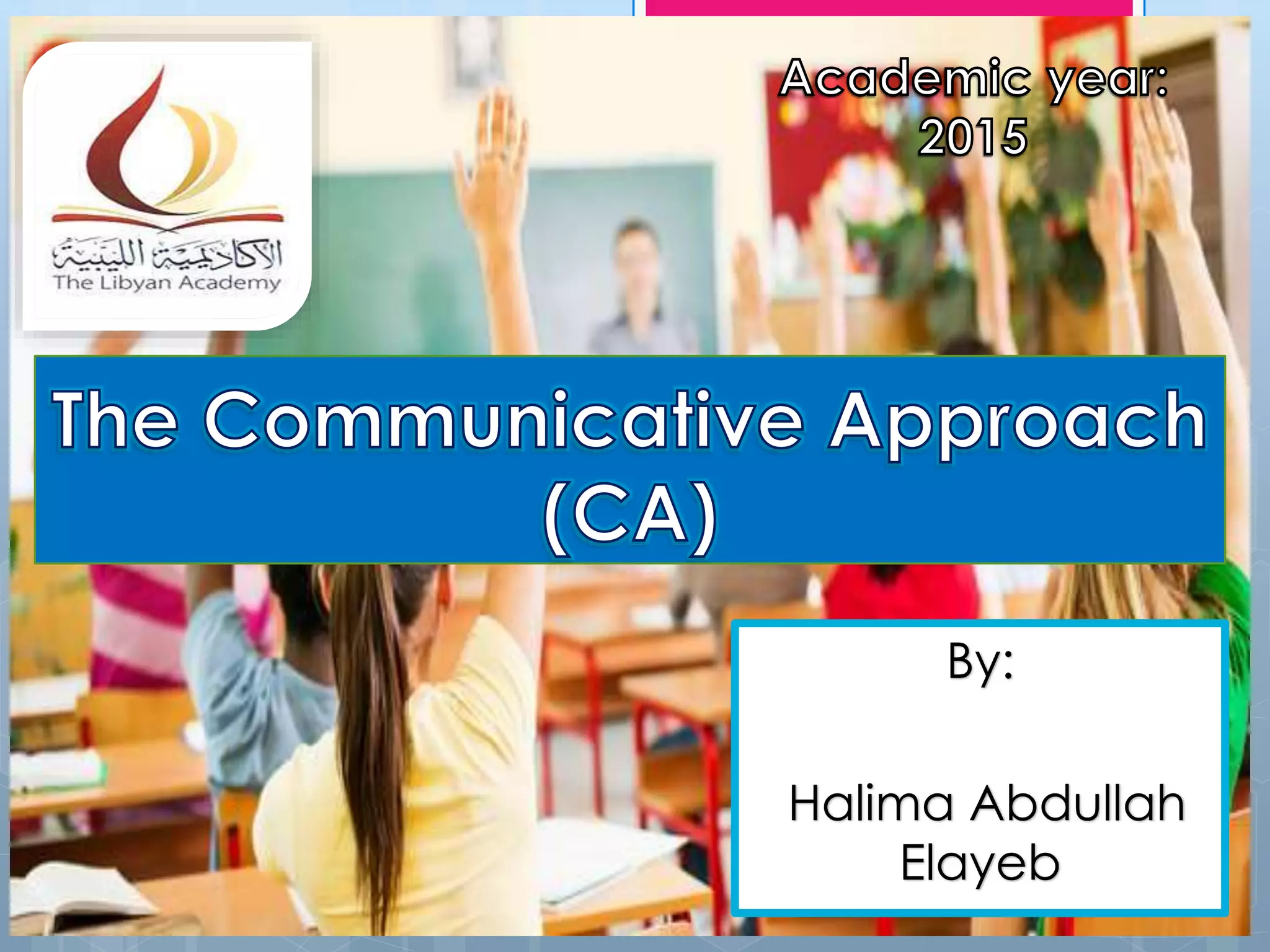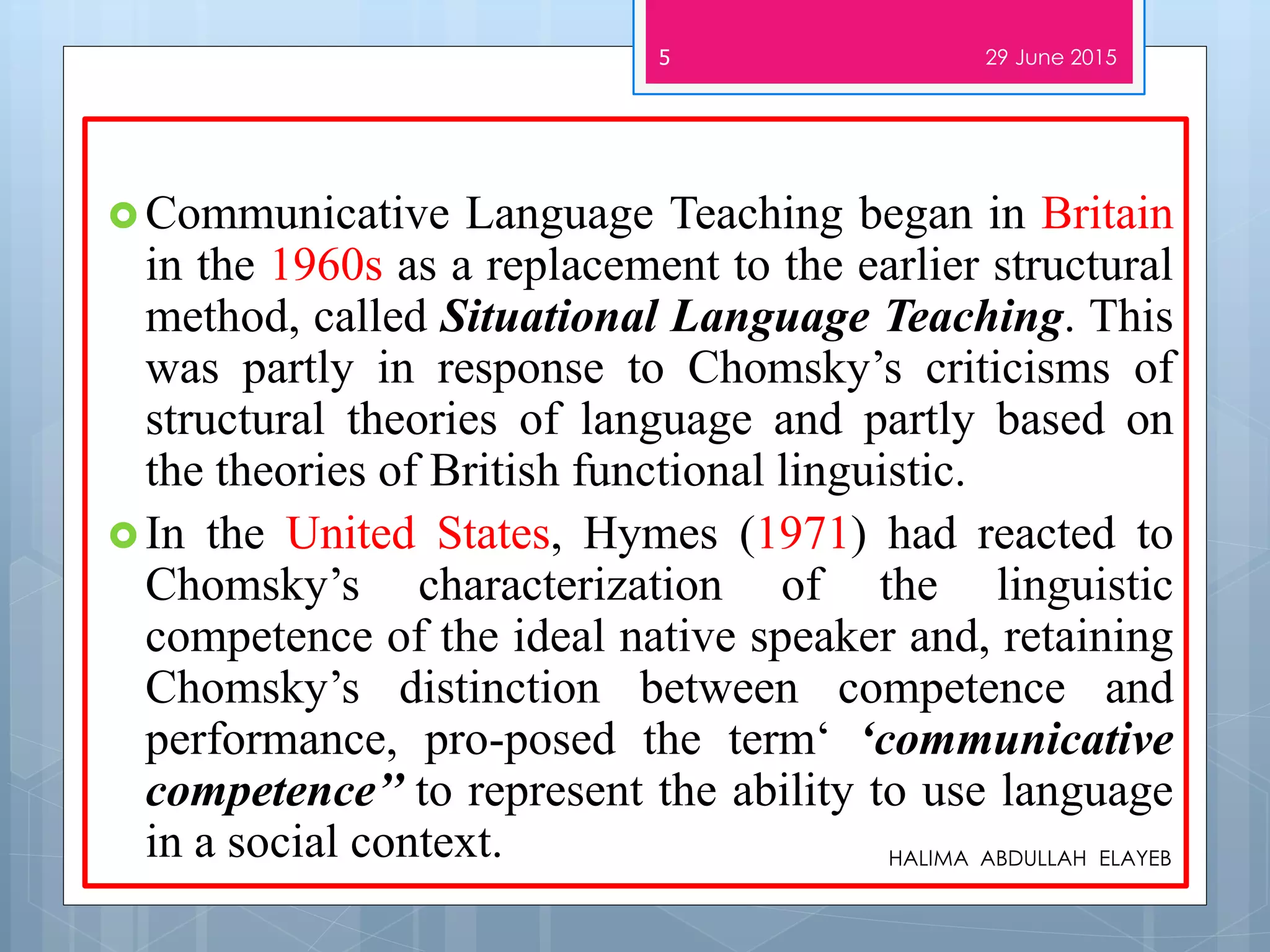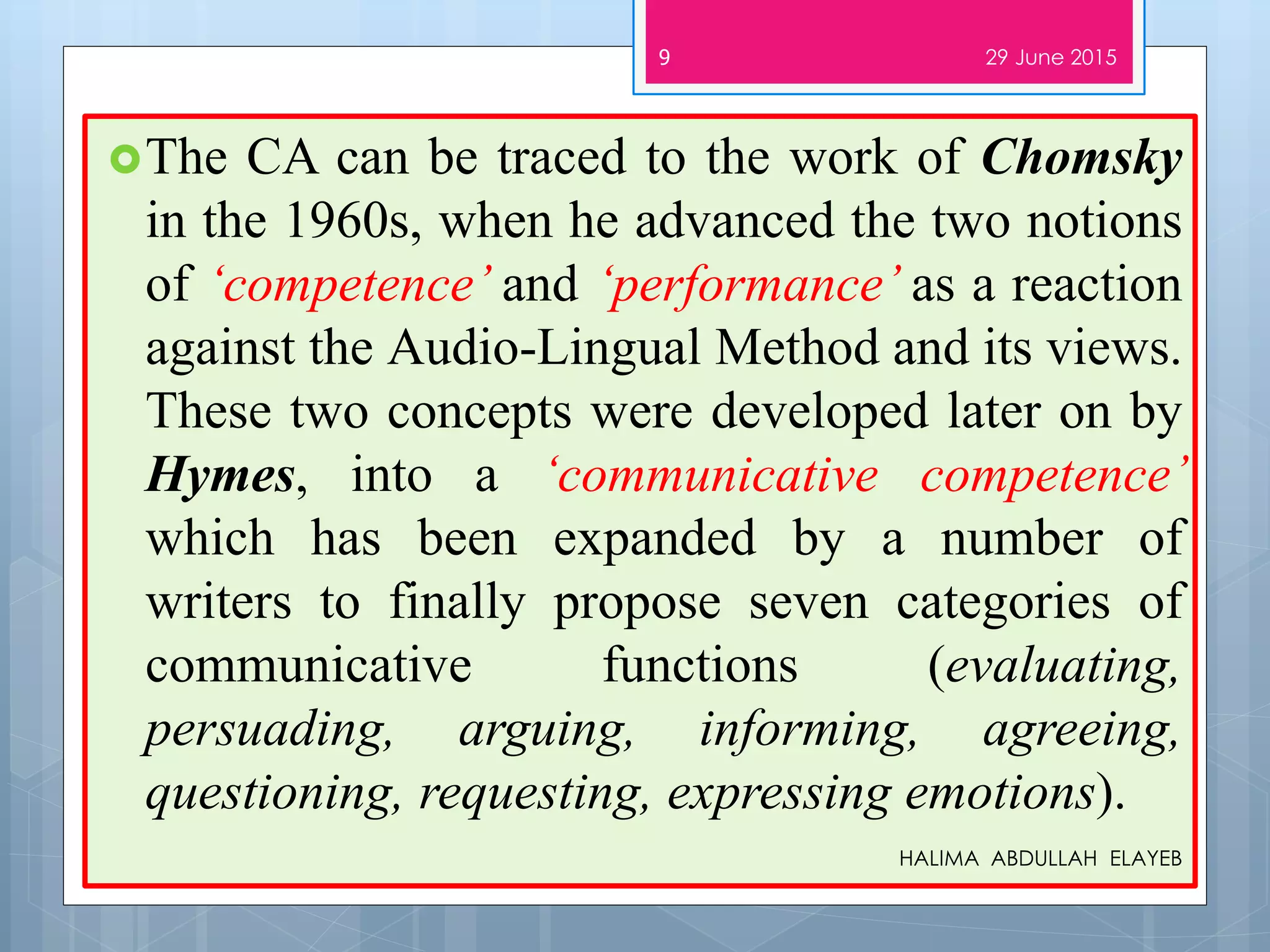The document discusses the communicative language teaching approach. It traces the origins of the approach to Chomsky's work on competence and performance in the 1960s, which was later developed into the concept of communicative competence by Hymes. The approach aims to teach real-life language use and communicative skills. It focuses on functions like requesting and notions like time. Grammar is taught intuitively through meaningful use. The role of the teacher is as a facilitator and the activities emphasize pair and group work, role plays, games and problem-solving to encourage communication over accuracy.










































